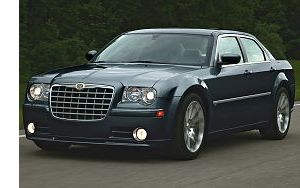One of the keys to restarting the American economy is staring us in the face. While our future hinges on the rapid adoption of fuel-efficient vehicles, our government stands in the way of a rapid free market solution.
35 MPG can be an immediate reality, with one domestic manufacturer, if the United States government would only allow it to happen. Our elected representatives need to be aware of the facts and make the appropriate decisions.
 Chrysler is uniquely positioned among the Big Three US automakers. Unlike Ford and General Motors, Chrysler is already building a slew of high-MPG diesel-powered vehicles right here in the United States.
Chrysler is uniquely positioned among the Big Three US automakers. Unlike Ford and General Motors, Chrysler is already building a slew of high-MPG diesel-powered vehicles right here in the United States.
Amazing as it may seem in these difficult times, Chrysler is not allowed to sell those cars domestically, due to recently tightened emissions regulations. With the exception of the domestically-available Jeep Grand Cherokee diesel, all of Chrysler’s North American manufactured high-MPG diesel-equipped vehicles are being shipped abroad.
Each and every one of Chrysler’s European models is available with a diesel engine, with the exception of the Dodge Viper. In fact, a diesel engine can be found under the hood of more than 50% of the vehicles that Chrysler sells in Europe.
All-in-all, a dozen Chrysler, Dodge, and Jeep diesel-engined models are currently available outside of the United States, but are not sold domestically.
Here’s the eye-opener … half of those models currently achieve 35 miles per gallon combined.
That’s 35 MPG … right now.
And what’s even more crazy? All of these 35 MPG cars and SUVs are built in North American plants by North American workers … American citizens cannot buy and drive the fuel-efficient cars they build.
 The thriftiest of the bunch delivers nearly 50 MPG on the highway … and it’s no dog off the line, turning in 0-62 mile per hour (MPH) times under nine seconds. The fastest in the pack delivers 7.6 second 0-62 times and 35.6 MPG on the highway.
The thriftiest of the bunch delivers nearly 50 MPG on the highway … and it’s no dog off the line, turning in 0-62 mile per hour (MPH) times under nine seconds. The fastest in the pack delivers 7.6 second 0-62 times and 35.6 MPG on the highway.
Needless to say, these are wonderful world-class cars, a world apart from your Uncle’s noisy, slow, smelly 80’s-era diesel.
Read more


 Chrysler is uniquely positioned among the Big Three US automakers. Unlike Ford and General Motors, Chrysler is already building a slew of high-MPG diesel-powered vehicles right here in the United States.
Chrysler is uniquely positioned among the Big Three US automakers. Unlike Ford and General Motors, Chrysler is already building a slew of high-MPG diesel-powered vehicles right here in the United States.  The thriftiest of the bunch delivers nearly 50 MPG on the highway … and it’s no dog off the line, turning in 0-62 mile per hour (MPH) times under nine seconds. The fastest in the pack delivers 7.6 second 0-62 times and 35.6 MPG on the highway.
The thriftiest of the bunch delivers nearly 50 MPG on the highway … and it’s no dog off the line, turning in 0-62 mile per hour (MPH) times under nine seconds. The fastest in the pack delivers 7.6 second 0-62 times and 35.6 MPG on the highway. 
